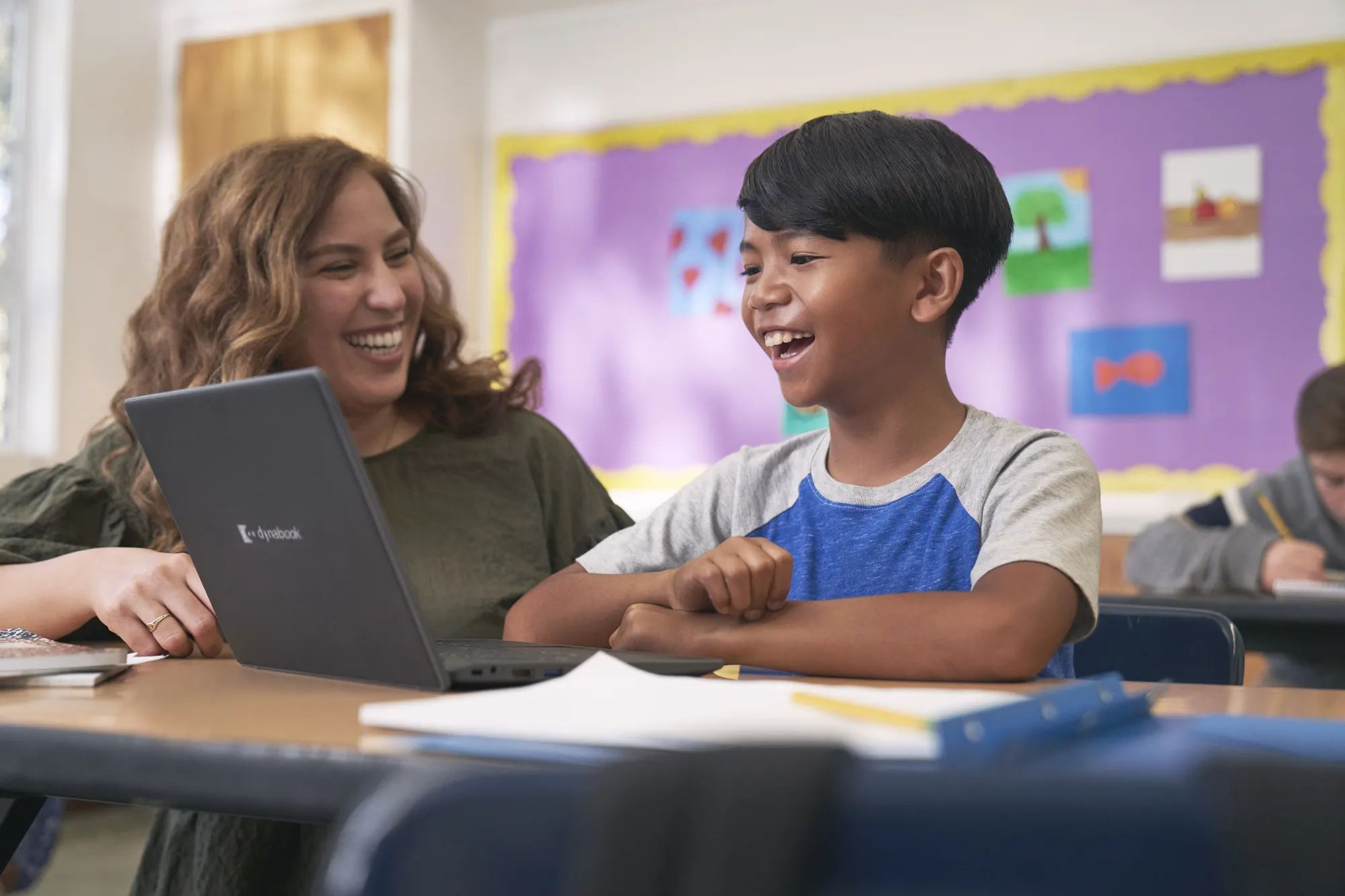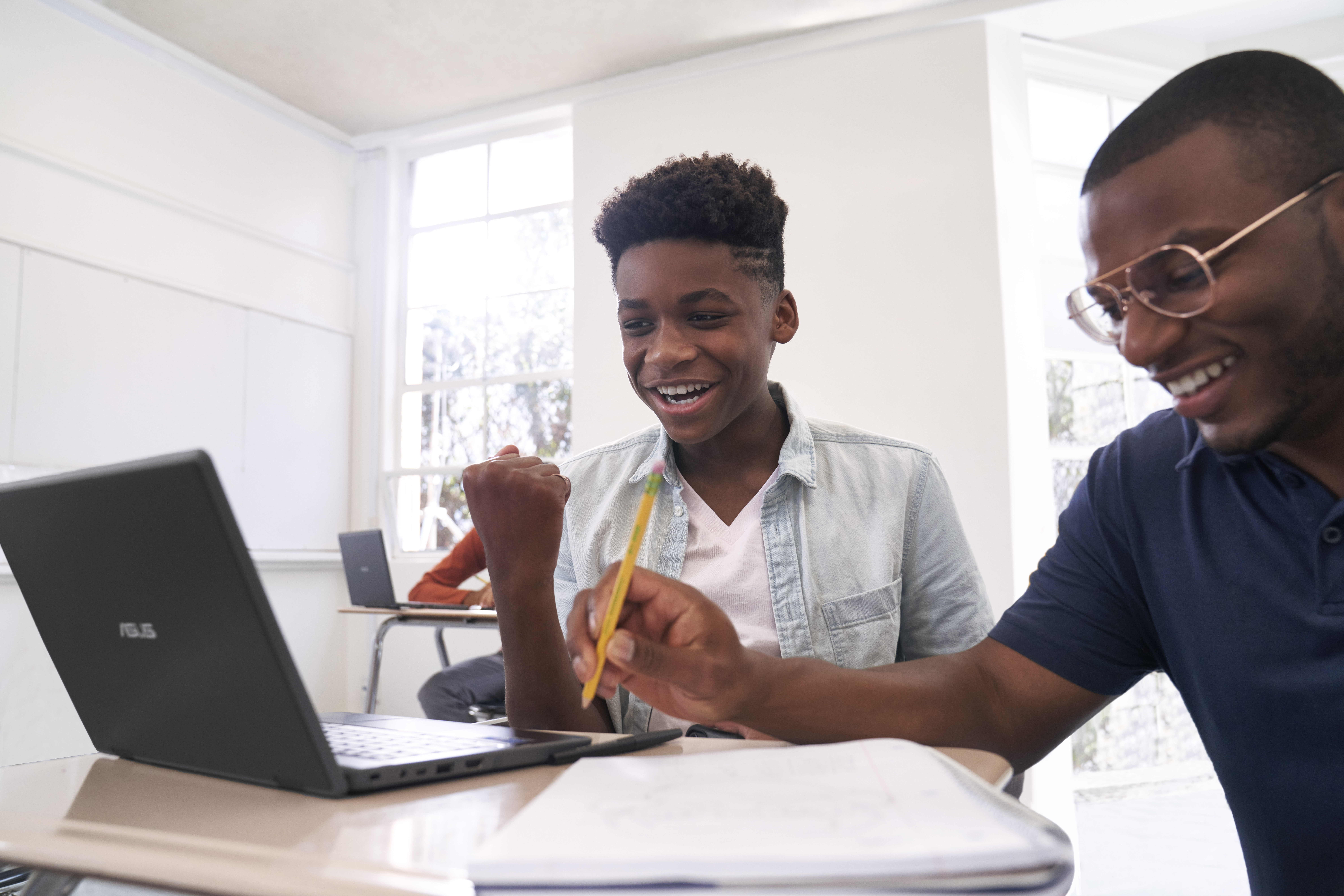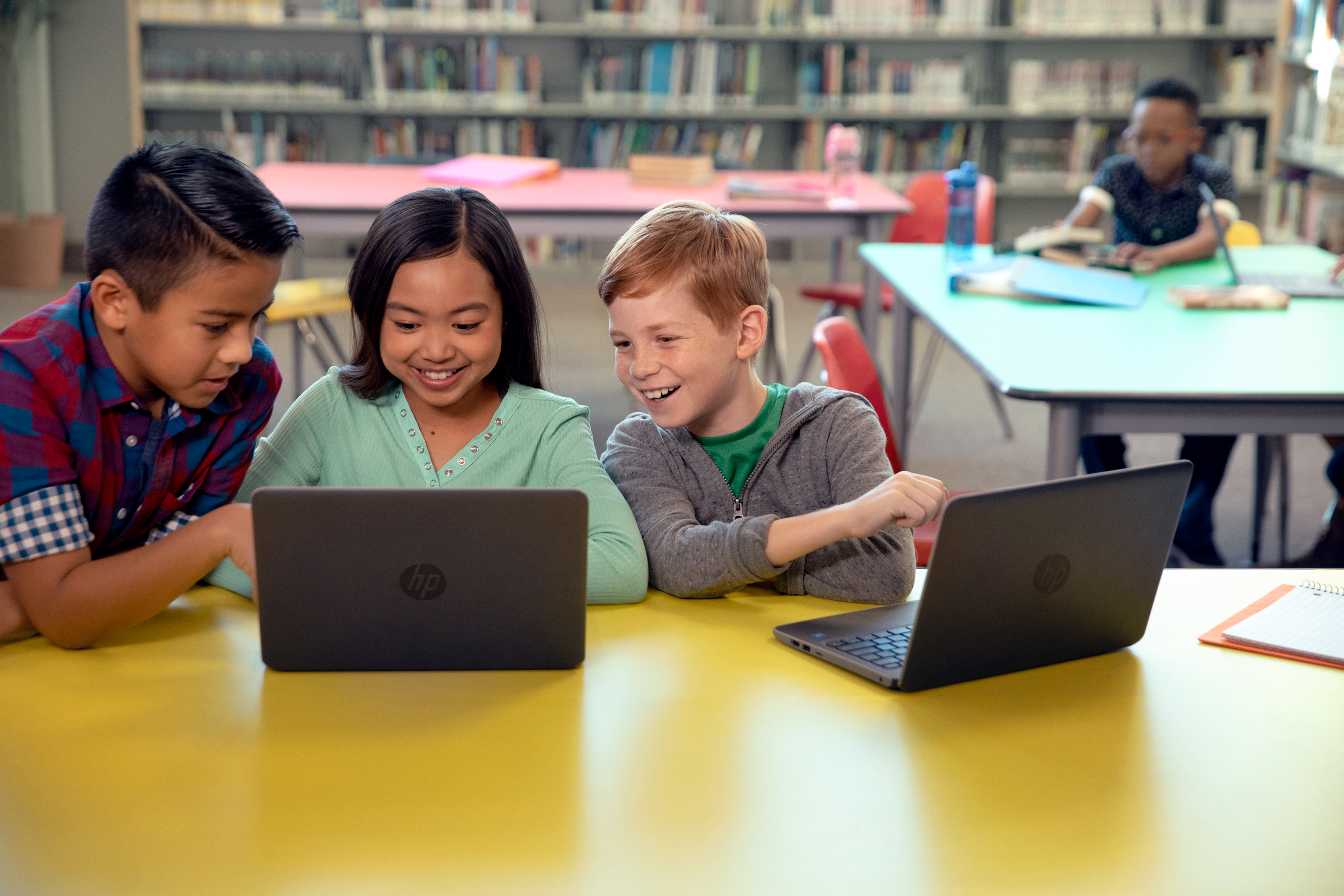Hector Lopez, a teacher and head of the math department at El Camino Real Charter High School in Los Angeles, thinks a lot about his students’ well-being during social distancing. After all, being apart from friends and teachers is hard. But he’s not terribly concerned about student learning.
“We’ve managed to make a really good transition. Speaking for myself, in some ways, I see this as an exciting time in education,” Hector said, adding that he believes teachers are innovating and will take some of the new practices they develop during distance learning back into the classroom.
Investing in students and teachers
El Camino is a public charter school that serves 3,600 students, more than a third of who come from low-income families. The school, which has a 90 percent graduation rate, is a Microsoft Showcase School. Schools in the Showcase School program are committed to delivering student-centered, personalized learning and sharing their ideas and collaborating with others to transform education.
El Camino has been training its teachers for the past two years on the use of Microsoft Education tools. Just before switching to remote learning on March 16, school leaders led additional professional development to go over best practices during distance learning.
The school began working toward a 1:1 student-to-device ratio in the 2018-2019 school year, and both students and teachers have Windows 10 devices. “One of the main goals of this initiative has been to have equitable access to technology for every student so they can focus on what really matters,” said Ryan Guinto, the school’s Director of Technology.
He added that the school also has provided hot spots to the small percentage of families that needed internet access. As a result of all this, the school transitioned to distance learning seamlessly, “They did not skip a beat,” he said.
Ryan’s colleague, Fernando Delgado, the school’s Chief Information Officer, added that teachers are entirely comfortable with the tools they’re using remotely because they were using them, albeit in different ways, before the current closure. “Right now, they’re holding their virtual meetings using Microsoft Teams. They’re posting the materials using Teams, and they’re using Microsoft Stream to record their Teams sessions, which they then can share for later use,” Fernando said.
He added that the school has integrated Teams with Canvas, the school’s learning management system (LMS). Microsoft Education and various leading school LMS providers worked to ensure teachers could set up a Teams meeting directly from an online classroom within a school’s learning management system earlier this year when schools worldwide were switching to remote learning.
Teaching and connecting with Teams
Microsoft Teams is a core learning tool for El Camino. Hector says he uses it to run his classes, post assignments, and more. He appreciates its ease of use and finds that it meets his students’ academic, as well as social and emotional, needs. To address the latter, he starts each class with a check-in question. “It can be something as simple as, ‘Tell me what you had for breakfast today,’ or something else really simple to make them feel welcome,” he says.
“My role as a teacher is just allowing them, or giving them the platform, to express themselves and their feelings,” he said. “They are worried—especially the older students—about graduation, not knowing what’s going to happen or how they’re going to graduate.”
Hector teaches whole-group lessons and allows students to work together in small groups during remote learning. He likes using Whiteboard, the freeform digital canvas that can be integrated with Teams, and sometimes empowers his students to be presenters and use the Whiteboard to lead discussions and show how they solved problems.
Drawing lessons from remote learning
Continuous improvement is a big part of the culture at El Camino. Faculty routinely pursue learning opportunities, including through the Microsoft Educator Center, and the school IT leaders support teachers and students alike.
“Providing the tools for learning is one thing, but providing ongoing training and support is another,” said Ryan. “Being able to transition to distance learning seamlessly is largely attributed to the consistent training and support that we provide to our teachers and students.”
Hector says he and his colleagues regularly work on improving their tech skills and are taking a close look at their instructional practices in this new environment. “I believe having this opportunity has taught me to create new schedules and new modalities of teaching,” he said, adding that students are benefiting. “I’m very happy to see the results.”
He noted that engaging remote instruction can sometimes encourage quiet students to participate more from the safety and comfort of their home. “Kids who never ask questions before, are becoming more active. They interact a little bit more. I believe they’re less shy,” he said.
When in-school learning resumes, Hector says teachers may have to adjust some of their instructional plans. For example, he and his colleagues have found that they’ve had to modify their pacing during remote learning and teachers may have to tackle some missing content later. “That way, we can slow down and focus on the instruction, give the kids a little bit more time to learn the material, teach less material but to a deeper understanding,” he said.
He said assessment strategies have to change somewhat during remote learning too, given that students can search online and use other tools to help them find answers to questions or problems. He says he and his colleagues are asking more open-ended questions that allow teachers to be able to recognize whether students really know a concept deeply or might be struggling with it.
While distance learning is going well at El Camino, the school isn’t resting on its laurels. Fernando says he plans to conduct surveys to get critical feedback from all stakeholders and stay focused on and committed to continuous improvement.
“I want to survey the students, survey the teachers, and survey the parents just to see how we can better support them. I think for the most part, the rollout, or the transition, was great,” he said. “But there are always issues. Do teachers need more support? Do students want to have more one-to-one interactions? What do parents want to see?”
Engaging parents, teachers, and students in this way helps foster an inclusive and collaborative school culture, something that El Camino leaders excel at whether the community is meeting on campus or remotely.
We value feedback here at Microsoft Education, too! If you’re using Microsoft Education tools to deliver instruction in innovative ways, we want to hear your story. One great way to stay in touch is through Twitter by tagging @MicrosoftEDU.




